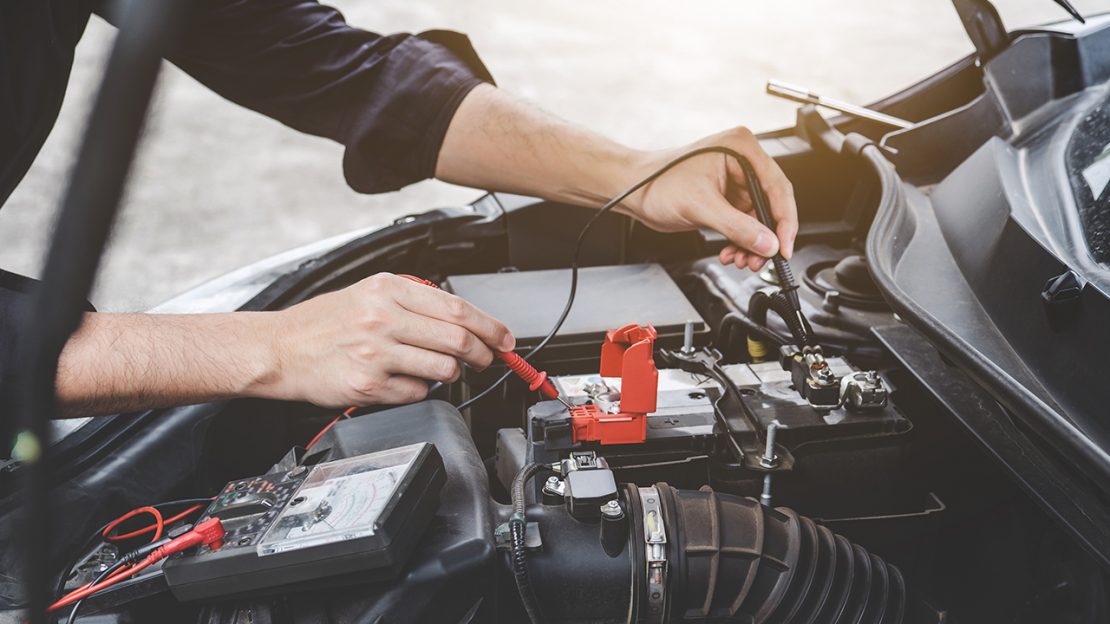When a car remains stationary for days or weeks on end, the battery’s charge starts to diminish. When the battery is unable to provide the electrical power to start the vehicle, it either requires a jumpstart to recharge or is outright drained. When you’re the manager of a dealership lot (or multiple), maintaining the health of hundreds of batteries can amount to a sizable price tag. However, with the help of a smart alert system and connected vehicle technology, dealers can gain more visibility and control of their vehicle’s maintenance levels.
Optimal Battery Levels
A car battery operates efficiently when the voltmeter reads 12.4 to 12.7 volts with the engine off, or 13.7 to 14.7 volts with the engine running. When a battery reading does not fall within these parameters, the battery either requires a jumpstart or needs to be replaced.
Gasoline vehicles charge their batteries during a drive as the alternator converts the engine’s physical energy into electricity. When the battery is not charged and thus does not meet the required threshold, the easiest fix is a jumpstart. A jumpstart provides the battery with the electricity it needs to get started. From there, the car needs to be driven around, allowing the alternator to continue to charge the battery. If this method does not accomplish the desired outcome, it is time to replace the battery.
Dying Batteries Cost Thousands
The average dealership holds 21 to 200 vehicles, each requiring general maintenance and battery replacement every three to five years. Without knowing current battery levels of each individual car, employees must either take each car out for a bi-weekly drive or risk potential battery drain.
While battery maintenance might not be top of mind for your dealership, neglecting this task could adversely impact your bottom line.
The average price to replace just one car battery is $200, not to mention the cost of labor. If you were required to replace one-third of the batteries on a single 175-vehicle lot each year, this would run you $11,600 in lost revenue. The numbers are even more jarring for electric vehicles, whose battery replacements can cost anywhere from $1,000 to $6,000.
Between the increasing demand for electric vehicles (EV) and California’s executive order requiring all new vehicles sold to be zero-emission by the year 2035, battery maintenance and repair costs for dealerships will only increase. This battery replacement is an often unnecessary and easily preventable expense.
Fix It Before It’s Too Late
Taking preventative measures, such as a smart alert system, can save a dealer thousands. Smart alert systems read the state and health of a vehicle and provide the user with automated alerts. If a car battery is low, the user will be notified and can take the car for a necessary drive rather than waiting until the last minute when a battery experiences a decreased chance of revival. These systems enable the lot manager to assess which vehicles need to be taken out and which can afford to remain stagnant for longer.
Leveraging Smart Alerts
Smart alerts take the guessing game out of battery charging, saving a dealership time and money. Understanding the problem is the first step to mitigating it. After all, you cannot fix a problem that you are unaware of. Save your business over $11,600 each year by investing in a preventative smart alert system. The Elo GPS system allows dealership staff to locate which vehicles require battery maintenance before it becomes too costly. To learn more about how our smart alert system can save you thousands, contact us to schedule a demo.

